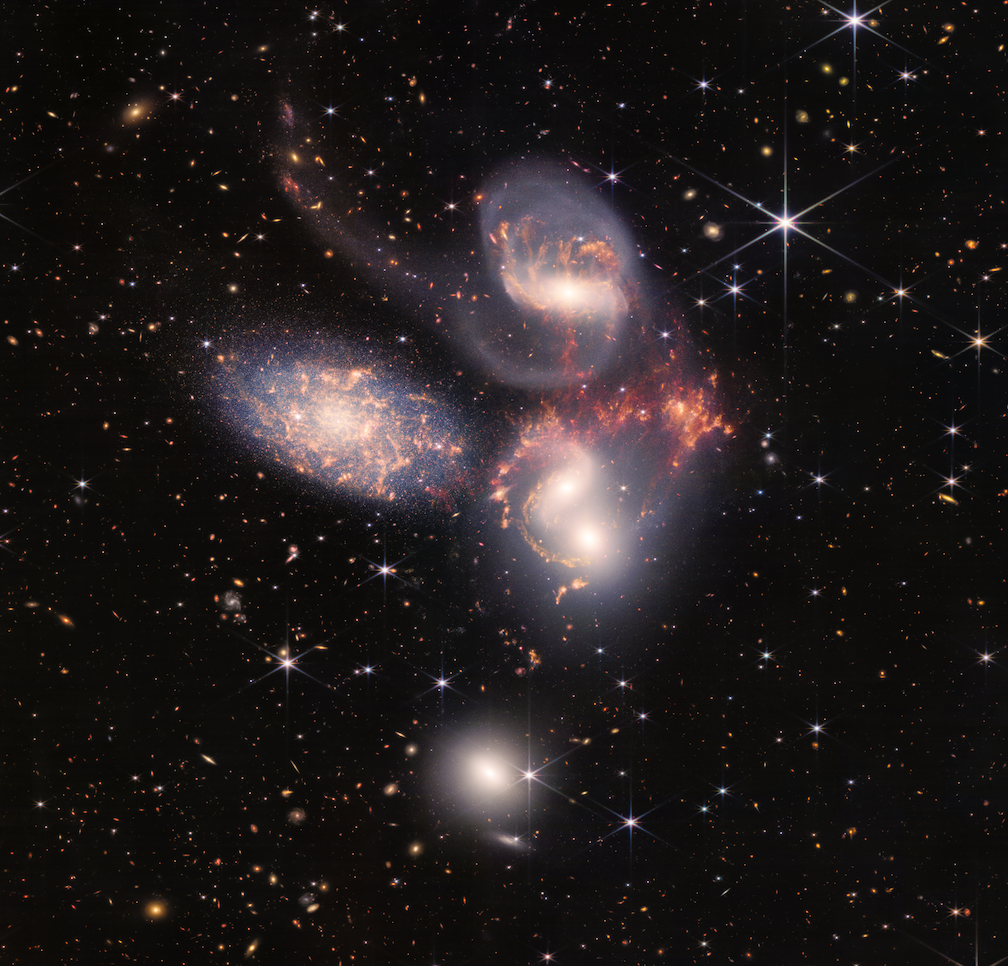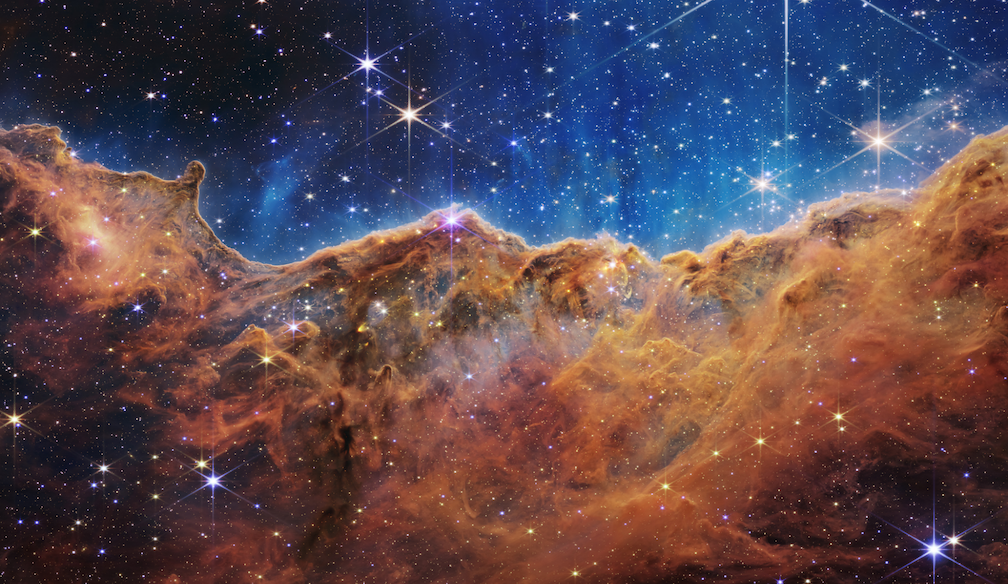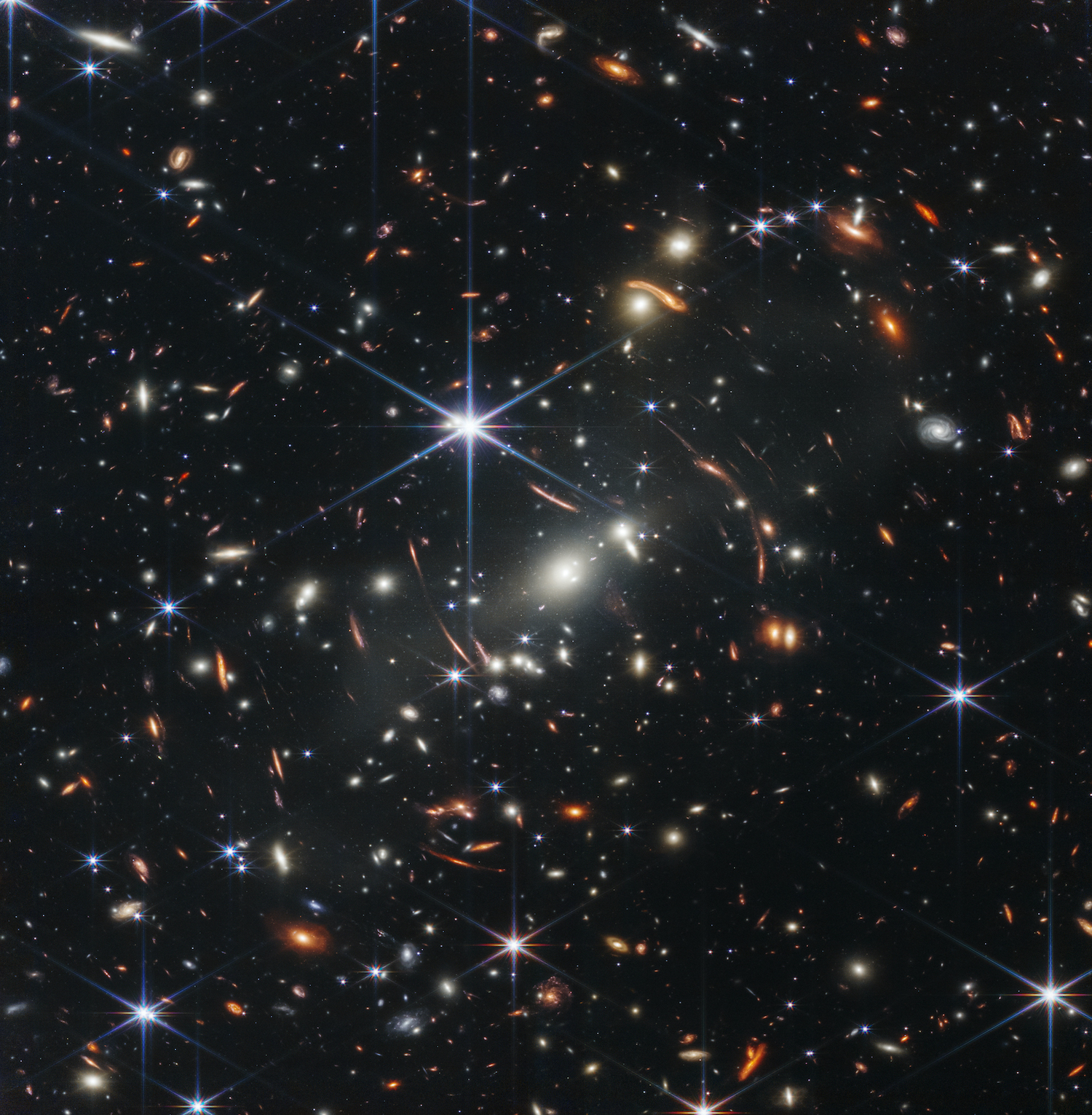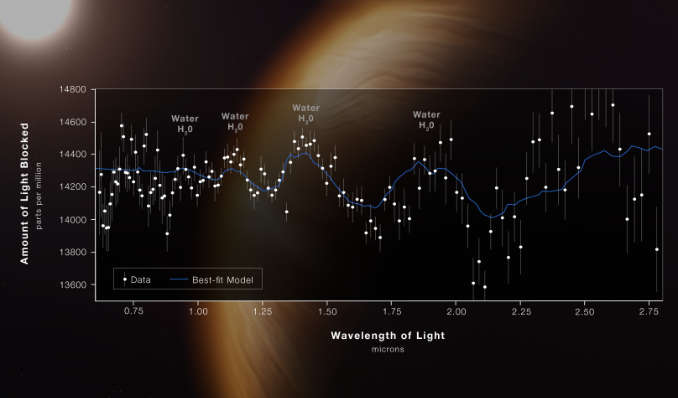Behold! The first images from the James Webb Space Telescope

Today marks the beginning of a new era in our understanding of the cosmos. The James Webb Space Telescope, the most advanced telescope ever built, has revealed its first images, giving us the deepest-ever view into the universe. The gallery below shows just the beginning of what we will learn from this phenomenal new eye on the universe.

This is the Southern Ring Nebula, a gigantic shell of gas and dust ejected from a dying star that scientists call a planetary nebula. Both of these images, taken by the James Webb Space Telescope, are of the same object just seen in two different kinds of Infrared light. Looking closely at the image on the right we can see a second star present at the center. This star, and its dying companion, light up the gas surrounding it leading to the majestic view we see. Each shell of gas represents a period in which the fainter, dying star, has lost some of its mass as it throws gas out into space. Studying stars like these helps astronomers understand how stars evolve and change as they go through their life.

Stephan’s Quintet is a close grouping of five unique galaxies, each containing billions of stars and planets. Four of these galaxies, the right-most in the image above, are closely interacting with each other, locked in a gravitational dance as they pass nearby and through each other. Over time, some of them may even combine to form larger galaxies. In the early universe, galaxy groupings like this were more common and galaxies were shaped in part by how they interacted with each other. Studying these modern-day interacting galaxies helps us understand how galaxies in the early universe were shaped.

What appears to be a beautiful mountain landscape is, in reality, the edge of a star-forming region within the larger Carina Nebula. Roughly 7,600 light years away from Earth, we see newly born, hot, young stars in their earliest years of life. As these newly born stars come to life, many of them above the gaseous terrain, they begin to push and shape the gas around them into what we see here. Studying stellar nurseries like these help astronomers understand better how exactly stars are born, and what happens to their neighborhoods when they begin shining.

This Deep Field image, showing us the vastness of the universe, is taken from a patch of sky the size of a grain of sand held at arm’s length. In it, every individual object, tens of thousands of them, is its own galaxy. Each one is a unique collection of billions of stars and planets. The group of galaxies in the foreground has such incredible mass and gravity that it acts as a giant lens, magnifying the galaxies behind it and allowing us to see even further away in greater detail. We are seeing these galaxies as they looked in the past, some of them over 13 billion years ago. The light released that long ago traveled all this time from near the beginning of the universe, to be seen by us today.

Here, we are seeing a spectrum, the fingerprints of specific elements and molecules, of the exoplanet Wasp 96b . The planet itself is over 1,000 light years away and is a gas giant, about half the size of Jupiter, with a scorching temperature of 1800 degrees Fahrenheit! By far the highlight is the detection of water vapor and the presence of haze and clouds in the atmosphere surrounding the exoplanet. While Wasp 96b is not an Earth-like exoplanet, it does show the unprecedented capability of the James Webb Space Telescope to make a detection like this. In the coming years, the telescope will turn its gaze toward potentially Earth-like exoplanets elsewhere in our galaxy.
ABOUT THE TELESCOPE
The James Webb Space Telescope launched in December 2021 and spent 30 days traveling to its final destination – a stable orbit approximately 1 million miles from the Earth. In the meantime, the telescope has been hard at work!
The instruments on the telescope see infrared light, the same kind of light that is emitted as heat from everything in the universe. To help them work, the telescope has to be at a frigid -447 degrees Fahrenheit! Perhaps, though, the most impressive feature of the telescope is its immense mirror, 21 feet 4 inches across, larger than any space telescope in human history. In order to be so large, the mirror has to be made of 18 individual hexagonal pieces. These pieces have been painstakingly aligned by the scientists and engineers at NASA to give us the crisp, clear views of the universe that we see above.
In the coming years, the James Webb Space Telescope will give us unprecedented views of the cosmos. We can look back in time to study the earliest formations in our Universe, the atmospheres of planets outside our solar system, and much, much more.
